Second Thru Fifth Days: The Bike, Gear, and Why.
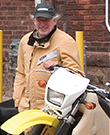
Executive summary: Battery warming wrap #2 still not warm enough…Stephanie making another even-warmer one now. Want these batteries to think they are still back in Santa Cruz. Lowered tire pressure a bit more yesterday. Suspension cold-stiff. Plug-in charging procedure stinks in dark, cold. Randy making a workaround for this now.
Feels very strange being in traffic, the only one on a motorcycle. People in their cars must all think I've completely lost it. Or maybe one in ten thinks 'cool' and the rest think 'that guy is a nut'. Some probably ignorant and resentful. Still having fun, and nobody hurt yet.
Bike: Nothing major broken yet. Not beating the crap out of anything…No horseplay riding. Just routine riding thru Duluth’s lovely winter climate and no warm garage between rides. Morning temp second day five degrees above and the warming battery wrap wasn’t working. Batteries only at 17º but they had enough power to get to work anyway, no drama. They’d self-warmed three degrees during the ride.
By the third morning we’d installed a different wrap and power supply. It was minus three for the first ride with that one and the batteries were at about thirty (see pic). The overnight low had been minus fifteen. Last night was even colder, minus eighteen and the batteries only got up to plus seventeen, so must make an even-warmer wrap. (With this type resistance wire length determines how hot it gets. The second wrap used two loops of about 180” each. The next one maybe will use about 160” loops. Auto parts stores sell warmers for car batteries…we should be able to make our custom-version work.)
Suspension is nearly nonexistent. Wonder if Zero has suspension we could bolt on with thinner oil? Need to change where 110v power connects by making a jumper wire up to somewhere near the handlebar, so we can plug in without getting down on our knees with a flashlight. The Zero’s connector is located up under the front of the bike’s ‘tank’ area, where it’s hard to find in the dark. It’ll be nice to plug in standing beside the bike. Almost like dispensing gasoline into a fuel tank except for the much lower cost.
Traction remains a problem…Not enough ice and snow grip with only 100 studs. The tires themselves are working fine on the salted-wet and dried off frozen road surfaces...but not on the icy/snowy places. Winter studded off-road tires have 300-500 spikes and a ‘stud contact patch’ involving maybe ten or more studs in contact with the ground. Our Zero has only two or three.
For street riding too many studs and there’s not enough rubber in contact the road…but too few and there’s not enough bite across icy/snowy areas. We’ll be adding about another fifty to each tire. The tires themselves could, in a perfect world, be of a softer compound with rows of little snow-tirey sipes, too. I’ve got a $29 tire-cutting tool so maybe later we’ll try adding some hillbilly siping? If we have time.
After I switched the key off in the driveway last night the little red LED eyes on the aluminum skull remained on, so after trying the key off-and-on a few times I finally reached underneath the skull and pulled one of it’s wires loose until the glowing eyes went out. Then I plugged the charger and battery heater in in and went indoors for the night…almost everything works.
Gear: My new size-expanded R-3 tactical is the bomb…Roomy. Comfortable. Perfect. I can move again! And it’s softer TF2 impact armor is quite a bit better in the low temps, too. After the first day my base layers stayed home. Now I simply wear a down sweater over my street clothing and the R-3 over that and I’m good to go. My balaclava is packed inside this suit’s front pocket and goes on if it’s zero or lower, but most temps have been between five and fifteen above. On colder days I’m sure I’ll be back in the longhandles. My commute is only twelve to fifteen minutes.
The wool-lined elk roper gloves have also been fine with the heated grips on high. The biggest difference in dressing and undressing has been my boots which are old felt-insulated Sorel’s (see photo). These pac’s are a Minnesota (and Canada) winter staple like ‘choppers’ and mine are maybe forty years old. They slip onto my feet without adjusting the laces, but they’re so much larger and clunkier than regular boots the right one has trouble getting through the R-3’s right leg opening.
Why: Because I made a mistake twenty years ago. I’d been waiting all my life to justify having a specifically set up winter commuting bike…and was always too cheap and stubborn to spend the money needed to set one up, and never wanted to ruin one of my ‘nice’ bikes on the winter-salted streets. Now I’m 62 and Zero has generously loaned us a bike and it’s time. Twenty five years ago I’d mounted spiked knobbies on a couple of dirt bikes for weekend fun and had also ridden them to work a few times, and that was it. I’d never committed to this winter commuting stuff fifteen or twenty years ago…I don’t regret a moment of all those winters of walking back and forth to work, but looking back now I sure wish I’d also created some kind of riding option long ago.
On the second night with the Zero I’d waited until after commuter traffic had faded, about 7 PM. It was fully dark and streets were empty as expected…everyone being anxious to be snug at home on these cold nights.
The light controlled intersection of 10th Avenue East and Second Street has three lanes, two for traffic and one for parking, which becomes a turn lane near the stoplight. Which was red as I approached. A city bus was in the right lane, waiting to turn and there in the center of the otherwise empty middle lane was some guy pedaling home on a commuter-bicycle…helmeted and all bundled up, with fenders, saddle bags and a flashing LED taillight. No moving cars as far as the eye could see in both directions. We were alone.
I Zeroed up to the crosswalk in the lane just to the left of the bicycle commuter as the bus began it’s turn downward onto 10 Avenue East, and braked to a silent stop about half a bike length ahead of this fellow, who, after absorbing that he’s next to some kind of motorbike says:
“Are those tires studded?”
“Yup” I reply. “And yours?”
“Yeah”
“Nice…”
“Have a nice ride” He says, as the light changes to green.
“You too.” I reply, then with an electric-vvvrrrrrrrrrrrrrrrrr…accelerate forward alone.
“A flat-black steed at the speed of light and Hio-Silver! Away!” You couldn’t have written a nicer script for television commercial about alternate green transportation if you’d been trying. I smiled into my helmet. Electric vehicles sell us what all technology -- from the beginning of everything – provides: Time. The scarcest resource in the world. From this perspective a Zero motorcycle seems hugely superior to all internal combustion versions. You simply ride it and change tires and brake pads occasionally, and not much else. They’re as simple and (so far seemingly) as reliable as a toaster. Expensive to buy, yes, but far less costly to operate…and they sure save lots of time. Now I understand why some Tesla car owners can be so irritatingly and condescendingly enthusiastic.
But what a Zero can’t quite provide is all of the familiar engagements which come built-in with every gasoline-fueled bike. None of the wonderful ‘Chitty-Chitty Bang Bang’ smoke, smell, hell-fire-and-damnation noise and vibration, and none of the fine time satisfyingly spent fiddling and fettling. You just ride it there.
Ninety years ago when steam locomotives and steam farm tractors were starting to be superseded by diesels, the old steam hands did not easily let them go. All their fine hissing, tending, valves and faucets…the boiler firing and fussing and adjustments and lubrication…If you’ve never seen something run on steam, go to a vintage tractor event some time…Or to a rail museum if you live near one of those. It’s easy to fall in love with steam if you’ve seen it in action at one of these places. (Or, watch the final scenes in the movie ‘Back to The Future III’.)
Humans are made to be engaged, and to interact with the world with all of our senses. This is an important difference between today’s cars and motorcycles. Riding any motorcycle, electric or gas, two-stroke or four, engages you in ways that provide so much more of the stuff which makes our lives worth living. So despite the added risks, vulnerabilities and discomforts, we ride. Motorcycling is more than simply A to B…it’s a kind of medicine. Cars today will haul you around as you fiddle with a smartphone or radio, or numbly watch the world pass outside of the windows. Pretty soon they’ll mostly all be driving themselves and even the passive steering, braking and throttling requirements will be gone.
The price of choosing to ride is actually about your time. Riding there requires extra time to dress, load and then strap on a messenger bag or backpack, or bungee something on, then undress at your destination, plus all the periodic fueling and maintenance. You can’t simply jump on and go. So most only choose to ride recreationally, when they have free time.
That’s why transportational riding requires such commitment. But here, with an electric motorcycle and an R-3 coverall suit, this decision-point comes a bit closer to being time-comparable with autos. So you end up riding a little more and thus you also feel physically better and mentally clearer.
One of the oldest stories in motorcycling comes from a time back when there were only limited numbers of cars and motorcycles in the world. On a particular day it was raining cats n’ dogs and two individuals had arrived at the same destination at the same moment, one via their enclosed car and the other on their motorbike. And the completely-dry auto driver looks at the dripping-wet motorcycle rider and says:
“You’re all wet. Don’t you wish you had a car?”
Without missing a beat the rider, looking back at the driver, straight in the eyes, replies:
“No. But I sure wish it would stop raining.”
Here’s a short video of my boring commute home last night.
And no. I don’t wish I had a car, either.
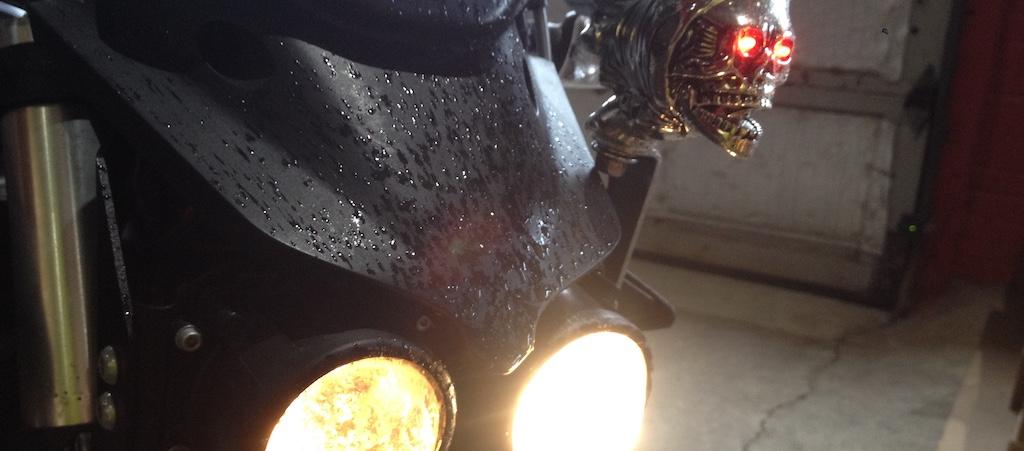
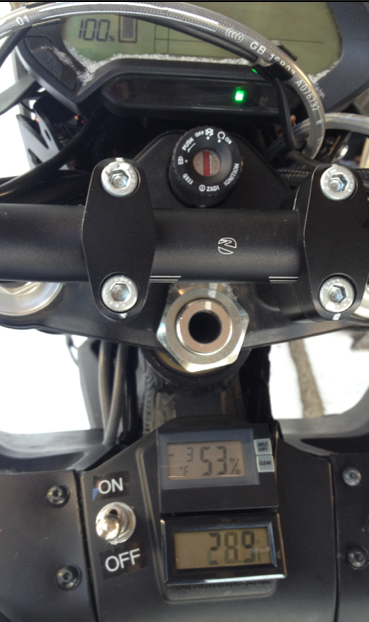
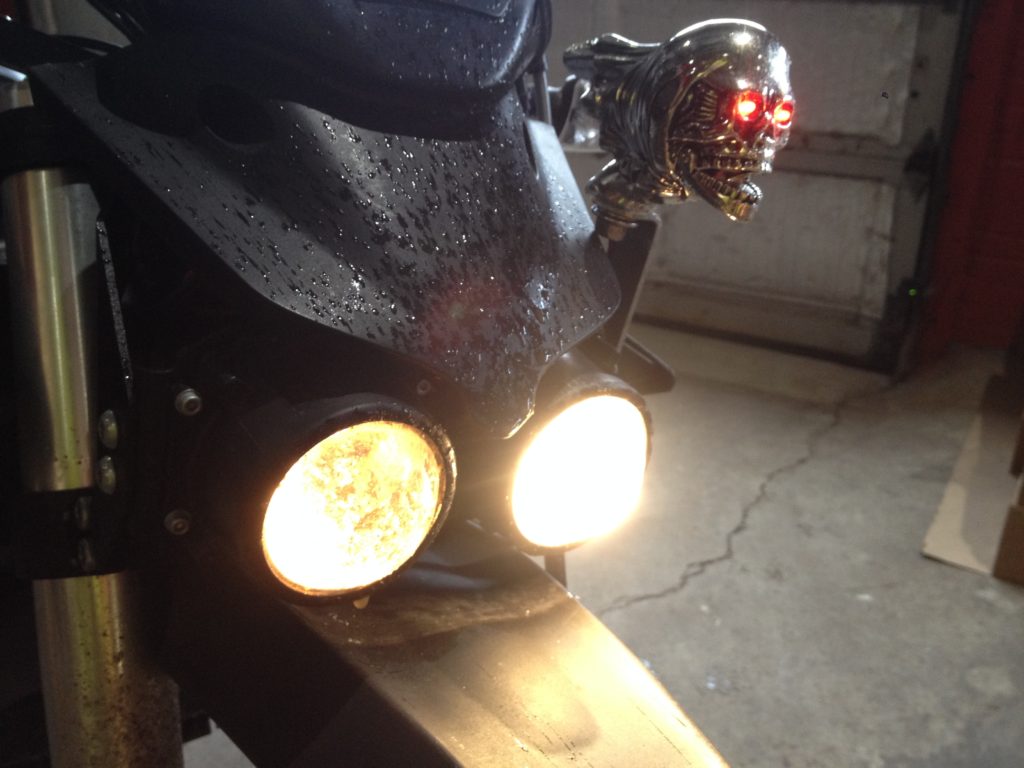
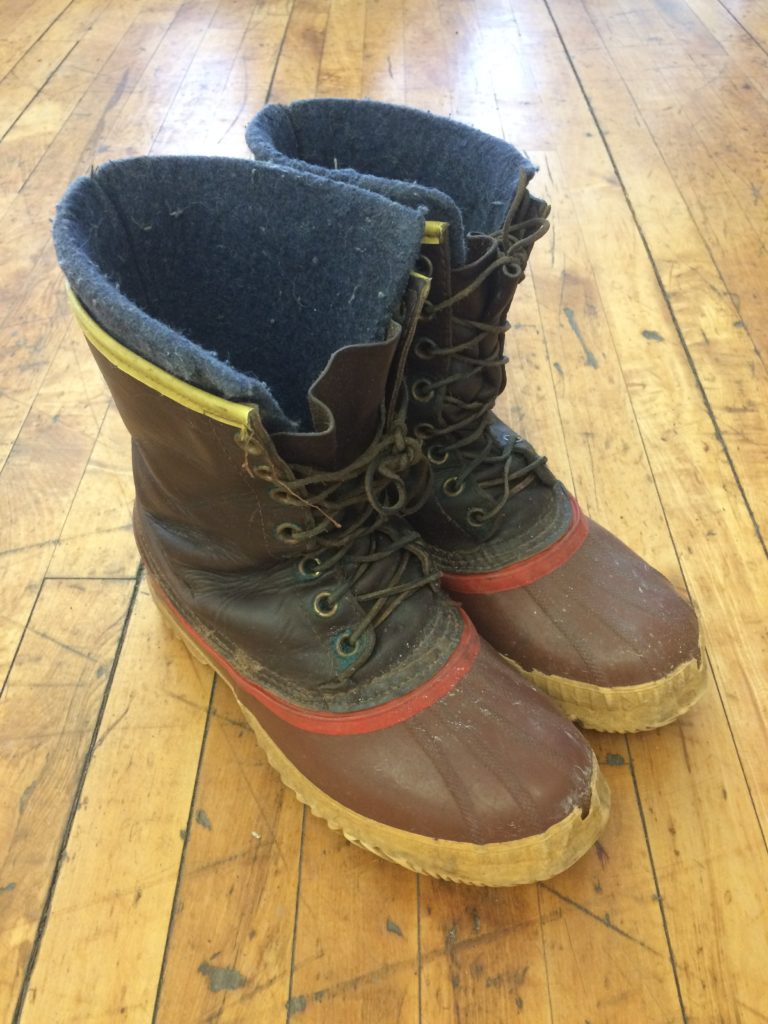
I hear you about the stiff suspension. Blew out the rear shock last week. Will be rebuilding with ATF.
Kudos to you, and good luck! :-)
FYI, the charge jack on the SR is a lot more accessible on the frame just above the swingarm pivot.
For commuting, I keep mine in "eco" for a less sensitive throttle. Are you doing that too for a little more traction control?
Is the camera strapped to your chest? If that's a GoPro, that's an amazing lack of wind noise.
I notice you seem to be doing the visor thing when you stop. Do you have a Pinlock in your helmet? Does it work in that weather?
Each rider is getting the chance to make adjustments to the ride settings, so yes, we are experimenting with the ride and sport modes top fit the conditions.
The camera is a go pro and it is mounted above the left logo pocket on a Roadcrafter (attached via hook and loop) http://www.aerostich.com/camera-mounting-system.html
Also, the visor worn in the video does have a Pinlock installed, lifting the visor in the video is partially habit when stopped (in Duluth in cold weather) and a little fogging up without airflow from moving.
I live in NJ, where it isn't nearly as cold,
but my commute is 33 miles each way for about 50 minutes, with speeds up to 70mph. I have an unfaired bike. I wear a classic Roadcrafter, but I find that I need quite a lot of additional layering below that, plus one of your electric bibs and a pair of electric gloves. I set my official lower limit at 30 degrees F. I can go lower, but it gets progressively less fun.
By the way, I'm just waiting until I have the funds for a Zero S or SR.